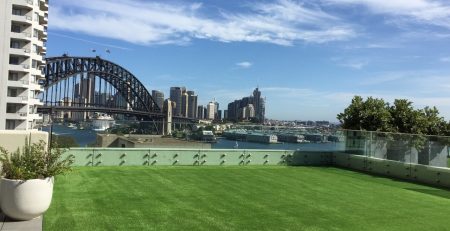The Rise of Artificial Turf: Revolutionising Sports Fields
In the world of sports, the playing surface is a crucial element that can significantly impact the game. For decades, natural grass has been the standard choice for sports fields, providing an authentic playing experience but often plagued by challenges such as maintenance, weather dependency, and durability. However, in recent years, a game-changer has emerged in the form of artificial turf. This synthetic alternative has been steadily gaining popularity, revolutionising sports fields and offering a myriad of benefits for athletes, sports organizations, and facility managers alike.
1. The Evolution of Artificial Turf:
Artificial turf, initially introduced in the 1960s, has come a long way since its inception. Early versions were criticised for their abrasive texture and lack of natural feel, leading to player discomfort and increased risk of injuries. However, advancements in technology and materials have led to the development of modern artificial turf systems that closely mimic the look and feel of natural grass while offering superior performance and durability.
2. Advantages of Artificial Turf:
a. Low Maintenance: Unlike natural grass, artificial turf requires minimal maintenance, eliminating the need for mowing, watering, fertilising, and pesticide application. This translates to significant cost savings and reduced environmental impact.
b. All-Weather Playability: Synthetic turf fields are not susceptible to weather conditions like rain or extreme temperatures, ensuring consistent playing conditions year-round. This reliability is particularly advantageous for outdoor sports facilities in regions with unpredictable weather patterns.
c. Enhanced Durability: Artificial turf is designed to withstand heavy usage and maintain its integrity over time. Unlike natural grass, which can become worn out and patchy, synthetic turf maintains its pristine appearance and performance even after extensive use, making it ideal for high-traffic sports fields.
d. Injury Prevention: Modern artificial turf systems are engineered with player safety in mind, incorporating shock-absorbing padding and infill materials to reduce the risk of impact-related injuries such as concussions and turf burns. Additionally, the consistent playing surface of artificial turf helps prevent uneven terrain and tripping hazards.
3. Future Trends and Innovations:
As technology continues to advance, the future of artificial turf holds promise for further improvements in performance, sustainability, and safety. Innovations such as alternative infill materials, biodegradable turf components, and enhanced recycling processes aim to address environmental concerns while maintaining the benefits of synthetic turf for sports fields.
Conclusion:
Artificial turf has emerged as a game-changing solution for sports fields, offering unparalleled durability, all-weather playability, and enhanced safety for athletes. As sports organisations and facility managers continue to embrace the advantages of artificial turf, the future of sports fields looks brighter than ever, ensuring optimal playing conditions and unforgettable experiences for athletes and fans alike.







